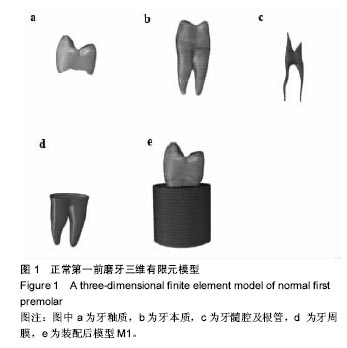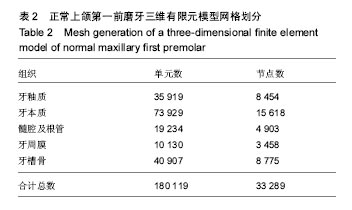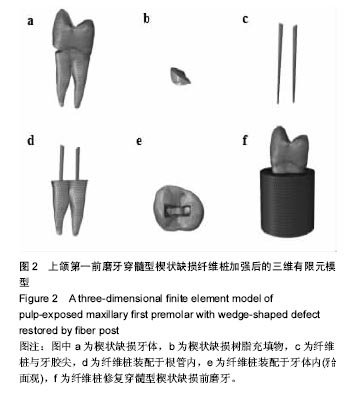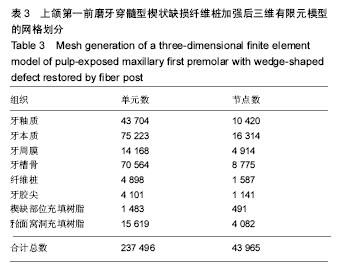| [1]Levitch LC,Bader JD,Shugars DA,et al.Non-carious cervical lesions.J Dent.1994;22(4):195-207.[2]Barttlet DW,Shah P.A critical review of non-carious cervical lesions and the role of abfraction, erosion, and abrasion.J Dent Res.2006;85(4):306-312.[3]Bader JD,Levitch LC,Shugars DA,et al.How dentists classified and treated non-carious cervical lesions.J Am Dent Assoc. 1993;124(5):46-54.[4]刘洪臣,王燕一,赵彦平.230例老年人牙折修复的临床分析[J].口腔颌面修复学杂志,2000,1(3):154-155.[5]皮昕.口腔解剖生理学性[M].6版.北京:人民卫生出版社, 2007: 9.[6]De Santis R,Prisco D,Apicella A,et al.Carbon post adhesion to resin luting cement in the restoration of endodontically treated teeth.J Mater Sci Mater Med.2000;11(4):201-206.[7]Ferrari M,Vichi A,Gareia-Godoy F.Clinical evaluation of fiber-reinforced epoxy resin posts and cast post and cores.Am J Dent.2000;13(Spec No):15B-18B.[8]Asmussen E,Peutzfeldt A,Heitmann TS.Elastic limit and strength of newer types of endodontic posts.J Dent. 1999; 27(4):275-278.[9]Imanishi A, Nakamura T, Ohyama T, et al. 3-D Finite element analysis of all-ceramic posterior crowns. J Oral Rehabil. 2003;30(8):818-822[10]Litonjua LA,Andreana S,Bush PJ,et al.Non carious cervical lesions and Abfractions:A Re-evalution.J Am Dent Assoc. 2003;134(7):845-850.[11]刘彦,牛忠英,石馨,等.2038 例中老年人健康体检中牙齿楔形缺损的调查和分析[J].牙体牙髓牙周病学杂志, 2010,20(11): 645-647.[12]Dietschi D,Duc O,Krejci I,et al.Biomechanical considerations for the restoration of endodontically treated teeth:a systematic review of the literature,PartⅡ(Evaluation of fatigue behavior, interfaces, and in vivo studies).Quintessence Int. 2008;39(2): 117-129.[13]许琳,朱文军,程绍华,等.纤维桩对复合树脂修复根管治疗后磨牙影响的有限元研究[J].中华口腔医学研究杂志, 2014,8(1): 18-22.[14]Costa A, Xavier T, Noritomi P, et al. The influence of elastic modulus of inlay materials on stress distribution and fracture of premolars. Oper Dent. 2014;39(4):E160-E170. [15]Oyar P, Ulusoy M, Eskitas?ç?og?lu G. Finite element analysis of stress distribution in ceramic crowns fabricated with different tooth preparation designs. J Prosthet Dent. 2014;112(4) : 871-877. [16]Murakami K, Yamamoto K, Tsuyuki M, et al. Theoretical efficacy of preventive measures for pathologic fracture after surgical removal of mandibular lesions based on a three-dimensional finite element analysis. J Oral Maxillofac Surg. 2014;72(4):833. [17]Durmus? G, Oyar P. Effects of post core materials on stress distribution in the restoration of mandibular second premolars: A finite element analysis. J Prosthet Dent. 2014; 112(3): 547-554. [18]Cui C, Sun J. Optimizing the design of bio-inspired functionally graded material (FGM) layer in all-ceramic dental restorations. Dent Mater J. 2014;33(2):173-178. [19]Oyar P. The effects of post-core and crown material and luting agents on stress distribution in tooth restorations. J Prosthet Dent. 2014;112 (2) :211-219. [20]O'Brien S, Shaw J, Zhao X, et al. Size dependent elastic modulus and mechanical resilience of dental enamel. J Biomech. 2014;47(5):1060-1066. [21]Belli S, Eraslan O, Eraslan O, et al. Effects of NaOCl, EDTA and MTAD when applied to dentine on stress distribution in post-restored roots with flared canals. Int Endod J.2015; 47 (12) :1123-1132.[22]Costa A, Xavier T, Noritomi P, et al. The Influence of Elastic Modulus of Inlay Materials on Stress Distribution and Fracture of Premolars. Oper Dent. 2014;39(4):E160-170.[23]Lazari PC, Oliveira RC, Anchieta RB, et al. Stress distribution on dentin-cement-post interface varying root canal and glass fiber post diameters. A three-dimensional finite element analysis based on micro-CT data. J Appl Oral Sci. 2013;21(6): 511-517.[24]Zhao L, Li LJ, Zhao K, et al. Finite element analysis of first maxillary molars restored with different post and core materials. Shanghai Kou Qiang Yi Xue. 2013;22(6):607-612.[25]Park JW, Ferracane JL. Water aging reverses residual stresses in hydrophilic dental composites. J Dent Res. 2014;93(2):195-200.[26]Bicalho AA, Valdívia AD, Barreto BC, et al. Incremental filling technique and composite material--part II: shrinkage and shrinkage stresses. Oper Dent. 2014;39(2):E83-92.[27]Belli S, Eraslan Ö, Eraslan O, et al. Effect of restoration technique on stress distribution in roots with flared canals: an FEA study. J Adhes Dent. 2014;16(2):185-191.[28]Petcu CM,Nit?oi D,Mercut? V, et al. Masticatory tensile developed in upper anterior teeth with chronic apical periodontitis. A finite-element analysis study. Rom J Morphol Embryol. 2013;54(3):587-592.[29]Feitosa SA,Corazza PH,Cesar PF, et al. Pressable feldspathic inlays in premolars: effect of cementation strategy and mechanical cycling on the adhesive bond between dentin and restoration. J Adhes Dent.2014;16(2):147-154.[30]He L, Liu L, Gao B, et al. Finite element analysis of the stress distribution of two-piece post crown with different adhesives. Hua Xi Kou Qiang Yi Xue Za Zhi. 2013;31(4):348-352.[31]Su KC, Chuang SF, Ng EY, et al. An investigation of dentinal fluid flow in dental pulp during food mastication: simulation of fluid-structure interaction. Biomech Model Mechanobiol. 2014; 13(3):527-535.[32]Lü LW, Meng GW, Liu ZH.Finite element analysis of multi-piece post-crown restoration using different types of adhesives. Int J Oral Sci.2013;5(3):162-166.[33]Afroz S, Tripathi A, Chand P, et al. Stress pattern generated by different post and core material combinations: a photoelastic study. Indian J Dent Res. 2013;24(1):93-97.[34]缪羽,于蕴之,李婧,等.桩核对牙冠完整的上颌第一前磨牙的应力 影响[J].口腔颌面修复学杂志,2012,13(1):30-33.[35]Ona M, Wakabayashi N, Yamazaki T,et al. The influence of elastic modulus mismatch between tooth and post and core restorations on root fracture. Int Endod J. 2013;46(1):47-52.[36]Rubin C,Krishnamurthy N,Capilouto E,et al.Stress analysis of the human tooth using a three-dimensional finite element model.J Dent Res.1983;62(2):82-86.[37]Misch CM,Ismail YH.Finite element stress analysis of tooth-to-implant fixed partial denture designs.J Prosthodont. 1993;2(2):83-92.[38]Augereau D,Renault P,Pierrisnard L,et al.Three-dimensional finite element analysis of the retention of fixed partial dentures.Clin Oral Investig.1997;1(3):141-146.[39]Provatidis CG.Parametric finite element analysis and closed-form solutions in orthodontics. Comput Methods Biomech Biomed Engin.2002;5(2):101-112.[40]Wakabayashi N,Ona M,Suzuki T,et al.Nonlinear finite element analyses:advances and challenges in dental applications.J Dent.2008;36(7):463-471.[41]Kavanagh EP,Frawley C,Kearns G,et al.Use of finite element analysis in presurgical planning: treatment of mandibular fractures.Ir J Med Sci.2008;177(4):325-331.[42]宋健,崔剑,祝颂松,等.不同下颌角成形术后下颌骨受力的三维有限元分析[J].实用口腔医学杂志,2010, 26(4):491-494.[43]Buyukkurt MC,Tozoglu S,Yavuz MS,et al.Simulation of sinus floor augmentation with symphysis bone graft using three-dimensional computerized tomography.Int J Oral Maxillofac Surg.2010;39(8):788-792. |
.jpg)




.jpg)
.jpg)